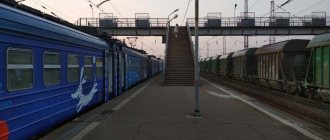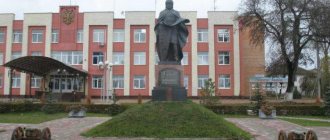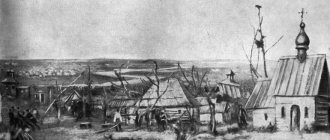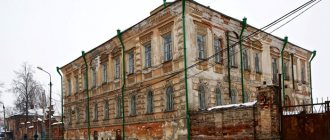Monchegorsk is one of the many cities in Russia. It is located in the Murmansk region, and is the center of the urban district. Monchegorsk (Murmansk region) is located 115 kilometers south of the regional city. As of 2021, it is home to almost 43 thousand people. Local residents call themselves Monchegorsk. The head of the district since 2013 is D.G. Staroverov. The administration is located on Metallurgov Avenue, 37.
Since ancient times, the lands here have been inhabited by the Sami. The name of the city comes from their word “mochche”, which translates as “beautiful”.
Short description
The city of Monchegorsk (Murmansk region), a photo of which can be seen in the article, is located beyond the Arctic Circle on the shores of lakes Imandra and Lumbolka. The relief is flat, most of it is located at an altitude of 120-130 m above sea level. The city plan was developed by architects in such a way that the streets located from west to east hide residents from unfavorable winds. The Murmansk – St. Petersburg highway runs not far from Monchegorsk, and there is also a railway connection with these cities. Bus transport and minibuses are available.
Climatic features
The city of Monchegorsk, Murmansk region, is located in the northern part of Russia. The climate here is moderately cold. There is a large amount of precipitation, the bulk of which occurs in the summer months. The average temperature in July is +12.9 °C, in January - -12.8 °C. Since Monchegorsk is located beyond the Arctic Circle, at this parallel one can observe such natural phenomena as the northern lights, characterized by multi-colored flashes in the sky that occur due to contacts of rarefied air with solar wind particles. Also at this latitude there are stable polar and white nights. The first lasts from early December to mid-January, the second from early May to mid-August.
Notes[ | ]
- from the point of view of the administrative-territorial structure
- from the point of view of the municipal structure
- ↑ 123
The permanent population of the Russian Federation by municipalities as of January 1, 2021 (Russian). Date accessed: April 27, 2021. Archived May 2, 2021. - OKTMO
- Charter of the Murmansk region
- Law of the Murmansk Region dated January 6, 1998 N 96-01-ZMO “On the administrative-territorial structure of the Murmansk Region” (as amended as of December 24, 2015)
- Charter of the municipal formation of the city of Monchegorsk with its jurisdictional territory
- ↑ 12
On amendments to certain legislative acts of the Murmansk region, Law 2568-01-ZMO - ↑ 12
On amendments to certain legislative acts of the Murmansk region in the field of administrative-territorial and municipal structure of the Murmansk region, Law 2569-01-ZMO - All-Russian population census 2002. Volume. 1, table 4. Population of Russia, federal districts, constituent entities of the Russian Federation, districts, urban settlements, rural settlements - regional centers and rural settlements with a population of 3 thousand or more (unspecified)
. Archived from the original on February 3, 2012. - The size of the permanent population of the Russian Federation by cities, urban settlements and regions as of January 1, 2009 (unspecified)
. Retrieved January 2, 2014. Archived January 2, 2014. - ↑ 1 2 3 4
All-Russian population census 2010.
Volume 1 “Number, distribution and age-sex composition of the population of the Murmansk region” (unspecified)
. Access date: February 2, 2014. Archived February 2, 2014. - Murmansk region. Estimated resident population as of January 1, 2009-2015
- Population of the Russian Federation by municipalities. Table 35. Estimated resident population as of January 1, 2012 (unspecified)
. Retrieved May 31, 2014. Archived May 31, 2014. - Population of the Russian Federation by municipalities as of January 1, 2013. - M.: Federal State Statistics Service Rosstat, 2013. - 528 p. (Table 33. Population of urban districts, municipal districts, urban and rural settlements, urban settlements, rural settlements) (undefined)
. Retrieved November 16, 2013. Archived November 16, 2013. - Table 33. Population of the Russian Federation by municipalities as of January 1, 2014 (unspecified)
. Access date: August 2, 2014. Archived August 2, 2014. - Population of the Russian Federation by municipalities as of January 1, 2015 (unspecified)
. Access date: August 6, 2015. Archived August 6, 2015. - Population of the Russian Federation by municipalities as of January 1, 2021 (Russian) (October 5, 2018). Date accessed: May 15, 2021. Archived May 8, 2021.
- Population of the Russian Federation by municipalities as of January 1, 2021 (Russian) (July 31, 2017). Retrieved July 31, 2021. Archived July 31, 2021.
- Population of the Russian Federation by municipalities as of January 1, 2021 (Russian). Retrieved July 25, 2018. Archived July 26, 2021.
- Population of the Russian Federation by municipalities as of January 1, 2021 (Russian). Date accessed: July 31, 2019. Archived May 2, 2021.
- Population of the Russian Federation by municipalities as of January 1, 2021 (Russian). Date accessed: October 17, 2021. Archived October 17, 2021.
- Statistical collection Number, distribution and age-sex composition of the population of the Murmansk region. Results of the All-Russian Population Census. Volume 1. 2012 Archived on December 22, 2012. / Federal State Statistics Service, Territorial body of the Federal State Statistics Service for the Murmansk region. Murmansk, 2012 - 75 p.
- Population of the Murmansk region by gender as of October 14, 2010 (unspecified)
(inaccessible link). Access date: September 7, 2012. Archived July 26, 2013. - Distribution of the population of the Murmansk region by the most numerous nationalities by municipalities (undefined)
(inaccessible link). Date accessed: February 6, 2015. Archived March 3, 2021.
Problems of the region
The city-forming enterprise "Severonickel", located on the territory of the city, at the end of the last century, with its emissions of harmful substances into the atmosphere, affected the ecology of the region. This led to the fact that the city of Monchegorsk, Murmansk region, was practically left without vegetation. However, after the enterprise was re-equipped, the picture changed. Dwarf trees began to grow, and moose, bears and hares, characteristic of the region, began to appear.
At the end of the last century, due to the pollution of water resources and atmospheric air, the area around the city with an area of 1400 square meters. km belonged to the zone of extremely dangerous pollution. From the beginning of the century to the present day, the plant has reduced sulfur dioxide emissions into the atmosphere by almost 5 times, and the situation no longer looks so depressing.
The city residents’ need for high-quality drinking water is also urgent. The main reserves of fresh water are located in Lake Monche; an excess of the concentration of harmful metals during the flood period is noted in some samples by 100 times.
Population[ | ]
| Population | ||||||
| 2002[10] | 2009[11] | 2010[12] | 2011[13] | 2012[14] | 2013[15] | 2014[16] |
| 55 060 | ↘51 316 | ↘47 975 | ↘47 930 | ↘47 664 | ↘47 143 | ↘46 628 |
| 2015[17] | 2016[18] | 2017[19] | 2018[20] | 2019[21] | 2020[22] | 2021[3] |
| ↘46 426 | ↘46 205 | ↘45 955 | ↘45 561 | ↘45 050 | ↘44 978 | ↘44 412 |
The population living in the territory of the municipality, according to the 2010 All-Russian Population Census, is 47,975 people, of which 21,939 are men (45.7%) and 26,036 are women (54.3%)[23][24].
According to the 2010 population census, 91.1% of the population of the municipality are Russians, 3.0% are Ukrainians, 1.5% are Belarusians, 1.1% are Azerbaijanis, as well as 3.4% of other nationalities[25].
Development
In 1937, in connection with the development of copper-nickel deposits, the village of Moncha-Guba, present-day Monchegorsk (Murmansk region), received the status of a city. After the arrival of geologists who confirmed the presence of the rock, construction of a working settlement began. The settlers worked in permafrost conditions, and electricity was installed. In the 70s, it turned out that nickel ore deposits were very scarce, and now the enterprise operates mainly on imported raw materials.
Industry
The Severonickel plant was founded in 1935, at the same time construction of the settlement of Monchegorsk began. The plant produced its first commercial nickel in 1939. When the Great Patriotic War began, the plant’s equipment was taken to the Urals and Norilsk. But already in 1942, the restoration of production began, and in 1945 the plant began operating at full capacity.
In 1963, the plant organized the production of carbonyl nickel. In 1967, the new sulfuric acid workshop began producing sulfuric acid from the waste gases of pyrometallurgical production. In 1979, electrolytic copper was obtained.
The plant uses raw materials - feinstein, which are transported from other plants, for example, Pechenganikel. The final stage of production is taking place in Monchegorsk.
The plant produces electrolytic nickel and copper, carbonyl nickel powders and shot, cobalt concentrate, precious metal concentrates, and sulfuric acid.
Nickel shot is used, for example, as an element in batteries and navigation devices. During the war, nickel was produced in Monchegorsk for armor steel. Alloys with nickel are used in orthodontics - nickel-titanium was first used in this area in the 1970s, and it is one of the most used materials today.
OJSC Kola MMC, which includes the plant, is a city-forming enterprise and the main customer of work and services from other enterprises.
Also among other large enterprises are the Monchegorsk Mechanical Plant, the Apatit mining and processing complex and Norilsk Nickel - Pechangastroy.
Infrastructure
Monchegorsk (Murmansk region) has the status of a single-industry town; recently an economic program has been developed to reduce the risks that exist for cities of this status.
Among educational institutions, in addition to secondary schools, there is a branch of St. Petersburg University named after. Lesgafta, music school and art school.
The city does not have a very developed chain of hotels, but the presence of picturesque nature in its surroundings makes tourism in the region a promising business. A unique Lapland nature reserve has been opened here.
Unfortunately, there are few shops and large shopping centers in the city. An acute problem is the lack of a modern healthcare system.
What is it like to live in Monchegorsk in winter?
Monchegorsk is a city of metallurgists. And all such cities risk becoming a “rust belt”. The population is 41 thousand people, while at its peak - in the late 1980s - more than 68 thousand lived here. This is the problem of small towns: the inability to retain young people and the enormous difficulty in attracting new talent.
The average salary in the city is 36 thousand rubles. Among the highest paid vacancies are a shop manager and a power engineer with a salary of 70 thousand, an electrician, and a repairman. And the most vacancies are at Nornickel-Pechengastroy: 19 with salaries ranging from 27 thousand to 69 thousand rubles.
Honestly earned money can be left in the cinema, on the ski slope (two cable cars, the length of the slope is 1000 meters, and there are cannons), in restaurants (there is Pronto, Kruzhka, Shokoladnitsa and a couple of dozen other places).
Not so far from the city you can go snowboarding and enjoy the beauty of nature in winter. In fact, it is in winter that it is beautiful here, at other times all the “shortcomings” are visible.
Let's start with the good. In the city center there is a central square, a cinema, restaurants and shops. There are also shopping centers. Everything is pretty decent. Especially in winter when there is snow.
It is especially difficult to study during the polar night.
I wonder who wrote this poster: “First we shape the environment, then the environment shapes us.” Well said.
In the photo you see on the right the area in which the plant's workers mainly live. Immediately an important caveat regarding urban planning: in Monchegorsk, the plant is located within the city. Not seven kilometers away, which would allow some of the smoke and gases to dissipate along the way, but right in the city itself. And the workers breathe the same air both on the territory of the plant and at home - together with their families.
In the area around the plant there are many abandoned buildings and structures. And a lot of smoke.
These photographs clearly show how much smoke the plant generates.
In the Monchegorsk region, sulfur dioxide and aerosol of sulfuric acid enter the atmosphere.
Imagine how hard it is to breathe when the wind blows towards the city center.
Bus stops in the city and beyond as a separate form of art.
What do you think these houses are in the foreground?
There are two mysteries at once in one photo: why does the building in the background need extra corners, and what kind of brick structure is in the foreground?








